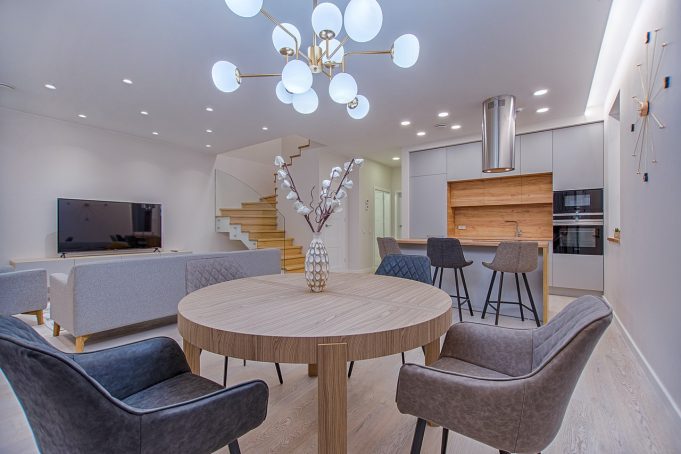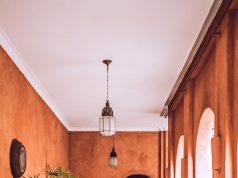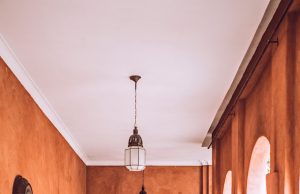When it comes to the flow and ambience of your living spaces, lighting is a fundamental element. Brighter, white lights can create a lively atmosphere while dimmer, softer lighting can be relaxing or even sleep-inducing.
As a result, if you’re refurbishing your home, you should ask yourself what kind of atmosphere you hope to create within your living spaces. Are you following a certain aesthetic? Do your own personal tastes denote a homage to the industrial era, or are you a creative, colour-loving free spirit? Perhaps most important, the atmosphere you create should reflect your own unique personality and bring you joy – you do have to live there after all!
When a different bulb or even a smartly placed table lamp can make or break the interior design of your home, it’s important to consider your current lighting setup and plan accordingly.
Consider your focal points
Within your living spaces, including your living room, kitchen and bedrooms, lighting is a great opportunity to create a focal point. Not all your fixtures have to be the same size. This is especially pertinent when introducing large fixtures within your home such as chandeliers. While chandeliers can elevate your larger spaces with elegant style, you might like to consider less domineering lighting for your smaller spaces. A distinctive floor lamp or vintage-inspired sconce for example can create a cosier atmosphere, won’t dominate the space, and can create a more intimate focal point when flanking a piece of wall art. Size does matter, and lighting should never overpower a room – it should complement your home and add to the space without monopolising the interior design.
Match your lighting to the mood of the room
Perhaps most pertinent, it’s important to match your lighting to the mood of the room, and vice versa. Soft, yellow light can set the mood for a romantic evening or a restful, comfortable sleep. You might add two different lights in a child’s room – a softer light for resting and a brighter, white light for getting up in the morning. Balancing the lighting in your home can create a friendlier, more comfortable atmosphere within your interior spaces, and be the difference between a house and a home.
Optimising your home for natural light
Maximising natural light in your home will without a doubt, transform your interior spaces. If you’re thinking of upgrading the windows in your home, then you might want to consider installing bifold doors or large casement windows that will bring more light into your property – your indoor plants will thank you! Natural light can also be paired with the use of glossy surfaces and mirrors which can trick the human eye into thinking the space is more spacious than it actually is.
Exterior lighting
When revamping the lighting within your home, don’t forget your exterior spaces. Perfect for small intimate occasions or large social events, solar power lighting or even simple sensor lights can transform your garden or patio area into an inviting, comfortable entertainment area.
Exterior lighting is also great for safety and convenience. If security is a primary concern, you might like to consider installing a sensor light by your entranceway or backdoor.
Get creative
Your new lampshade doesn’t have to be white! Refurbishing the lighting within your home is an opportunity to elevate your living spaces with fun, stylish design. From trendy, industrial style to bold, brightly coloured lampshades, choosing fresh lighting for your home is a chance to get creative, and tailor your spaces to your own personal tastes. Don’t be afraid to change up the aesthetics of your property.
Besides being a crucial, practical part of your home, lighting can also illuminate different aspects of your living spaces. For example, you might like to hang a pendant lamp to highlight your bedside table or use fairy lights around your bookshelf or favourite artwork. You can also light up indoor plants by hiding small spotlights within the foliage.
To get started try typing a few keywords into Pinterest or your favourite search engine for inspiration. You might opt for ‘large lampshade’ or ‘pendant light’.
Layer your lighting
As a general rule of thumb, three sources of light in each room will create a balanced space. To achieve this, consider layering up your lighting. How you go about this will depend on your own personal tastes and the unique aesthetics of your home. You might consider using different bulbs and colours or introducing different sized lampshades. For example, in a living room you might use a floor lamp in one corner of the room, and a vintage-inspired table lamp in the other corner on top of a stylish dresser. Having lighting at different heights around the room can transform the space from drab to atmospheric and elevate your home.
Use dimmers
Dimmers may seem outdated but in recent years they’ve made a comeback, becoming increasingly popular in domestic and commercial properties alike. Dimmers can instantly transform the atmosphere of a living space – and save you the hassle of costly utility bills. Perhaps most pertinent, dimmers allow the modern homeowner to gain more control over the lighting in their home, transforming the mood of a room. By day, dimmers can also be used to balance artificial with natural light.
If you don’t have dimmers in your home, you can also transform your spaces with different lightbulbs. Consider swapping a bright white light with a softer, yellow bulb and you’ll notice instantly how the mood of the room is transformed. Entertainment spaces with a TV for example, usually require less overhead lighting than a kitchen or study. Ambient lighting can reduce the glare on your screens and create a cosier atmosphere.
Conclusion
From your colour scheme to your furniture, there is much to consider when refurbishing your home. Your choice of lighting is of the utmost importance if you hope to foster a cosy, welcoming atmosphere within your living spaces – and while it can seem overwhelming, lighting your home doesn’t have to be a chore. It’s the opportunity to get creative, bring ambience into your living spaces and transform your property from a house into a home.














